The Families First Coronavirus Response Act (FFCRA) is the second of three bills aimed at providing access to medical care and financial assistance to all taxpayers during the COVID-19 pandemic. The FFCRA specifically ensures the availability of free coronavirus testing in addition to providing for two new paid leave requirements which will impact most small and mid-size businesses. Here is a summary of the most significant aspects of the legislation:
Relief for employees of private companies with fewer than 500 employees
- Paid Sick Leave for full-time employees (80 hours over a 2-week period): Required paid leave based on the employee’s regular pay rate subject to a maximum of $511 per day and $5,110 in total if the employee falls under any one of the following three criteria:
- The employee is subject to a Federal, State, or local quarantine or isolation order related to COVID–19.
- The employee has been advised by a health care provider to self-quarantine due to concerns related to COVID–19.
- The employee is experiencing symptoms of COVID–19 and seeking a medical diagnosis.
- Paid Sick Leave for full-time employees (80 hours over a 2-week period): Required paid leave based on an amount that is not less than two-thirds of the employee’s regular pay rate subject to a maximum of $200 per day and $2,000 in total if the employee falls under any one of the following two criteria:
- Is caring for an individual who is subject to a Federal, State, or local quarantine or isolation order related to COVID–19 or who has been advised by a health care provider to self-quarantine due to concerns related to COVID–19
- The employee is caring for a son or daughter of such employee if the school or place of care of the son or daughter has been closed, or the childcare provider of such son or daughter is unavailable, due to COVID–19 precautions.
- Paid sick leave for part-time employees: The rules outlined above apply to part-time employees, however, the number of hours of paid sick time to which a part-time employee is entitled is equal to the number of hours such employee works, on average, over a 2-week period.
- Emergency Paid Family Leave under FMLA: Required paid leave for each day of leave (after an initial 10-day unpaid period which coincides with the Paid Sick Leave discussed above) based on an amount that is not less than two-thirds of the employee’s regular pay rate subject to a maximum of $200 per day and $10,000 in total over the course of a 12-week period (including the initial 2 weeks of unpaid leave) if the employee needs to leave to care for a son or daughter under 18 years of age if the school or place of care has been closed or if the child care provider of such son or daughter is unavailable due to COVID-19.
- WG Comment: The rules surrounding sick leave and FMLA payments are very complex and we strongly encourage you to discuss these changes with your employment attorney to ensure compliance.
Relief for employers
The law requires cash payments to employees as outlined above. An obvious concern of the employer is how to fund these benefits during this economic crisis. This concern has been addressed by providing employers with a payroll tax credit to fully offset the benefits described above.
- Employer Tax Credits for Paid Sick Leave and Emergency FMLA payments: 100% of the wages paid to employees that qualify under the FMLA and paid sick leave requirements above will be returned to employers in the form of a payroll tax credit.
- WG Comment: Clearly, some businesses will not have the free cash flow to pay the employee wages listed above first and then seek reimbursement via the payroll tax credit. We hope to receive guidance from the IRS to solve this challenge.
Relief for self-employed individuals
Self-employed individuals meeting the criteria outlined above for full-time employees are eligible for relief in the form of one or two refundable tax credits.
Paid Sick Leave credit: This credit is based on the number of days during the year that the self-employed individual is unable to perform services for their business.
-
- Self-employed taxpayers who would qualify for the $511 per day payroll tax credit described above (i.e. they are directly impacted) are entitled a credit equal to the lesser of:
- $511 per day; or
- 100% of the average daily self-employment income of such individual for the taxable year (based on a 260-day year).
- Self-employed taxpayers who would qualify for the $200 per day payroll tax credit described above (i.e. they are caring for someone impacted) are entitled to a credit equal to the lesser of:
- $200 per day; or
- 67% of the average daily self-employment income of such individual for the taxable year (based on a 260-day year).
- Self-employed taxpayers who would qualify for the $511 per day payroll tax credit described above (i.e. they are directly impacted) are entitled a credit equal to the lesser of:
- This credit can be claimed for a maximum of 10 days.
FMLA credit: This credit is based on the number of days during the year that such self-employed individual would be entitled to benefits under the FMLA criteria described above if he or she were an employee.
-
- This credit is equal to the lesser of:
- $200 per day or
- 67% of the average daily self-employment income of such individual for the taxable year (based on a 260-day year).
- This credit can be claimed for a maximum of 50 days.
- This credit is equal to the lesser of:
- Presumably, these credits would be received when the Form 1040 is filed for 2020 in 2021, unless the IRS announces alternative procedures.
- Claiming the credits will require self-employed individuals to substantiate the credit with documentation when filing their income tax return. Currently there is no guidance on the exact documentation required.
For additional COVID-19 resources, see our resource page here.





